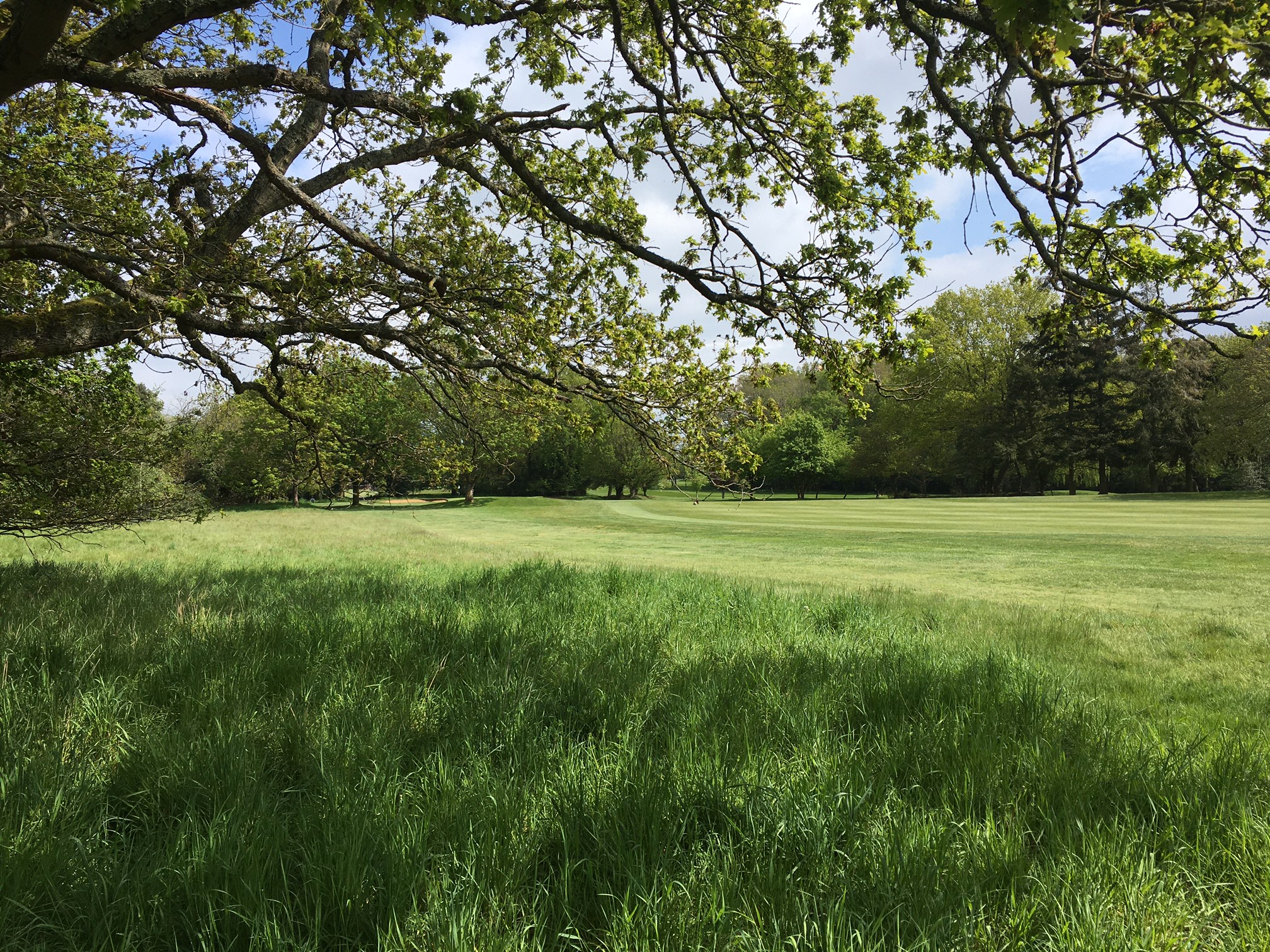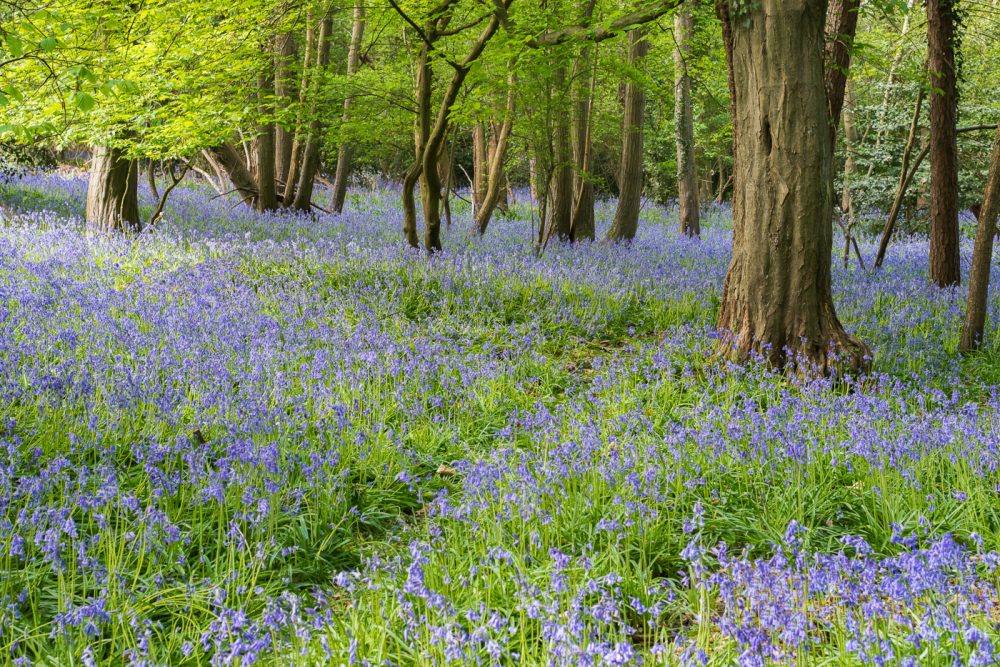
Ecology reports show biodiversity importance of Maidenhead Golf Course woodlands
Editor
- 11
- 3067
Drawing on the results of a series of ecology surveys, we have listed below the key habitats and species at risk from the RBWM’s plans to build over 2,000 flats and houses on Maidenhead Golf Course, and we are calling for the urgent protection and specialist management of the woodlands to support biodiversity in Maidenhead.
Please find the full reports here.
The 132 acres (55 hectares or 88 football pitches) of green space leased by Maidenhead Golf Club has around 10,000 trees (including three registered on the Ancient Tree Inventory), many types of wild flowers (including bluebells) and fungi, all supporting a rich array of wildlife. There are roe and muntjac deer, foxes, woodpeckers, jays, woodland birds, butterflies, moths, bees, bumblebees, stag beetles, grass snakes, moths, owls, kestrels, red kites, hedgehogs, slow worms, sparrowhawks and at least eight species of bats.
Habitats under threat:
- 2 hectares of Ancient Woodland and a small pond at Rushington Copse;
- 20 hectares of of broadleaved woodland, hedgerow, scrubland and fringe grasslands; and
- 23 hectares of green open space.
Bird species under threat (all protected by the Wildlife and Countryside Act 1981):
- Blackbird Turdus merula
- Blue tit Cyanistes caeruleus
- Bullfinch Pyrrhula pyrrhula (UK conservation status Amber)
- Buzzard Buteo buteo
- Carrion crow Corvus corone
- Dunnock Prunella modularis (UK conservation status Amber)
- Goldfinch Carduelis carduelis
- Great spotted woodpecker Dendrocopos major
- Great tit Parus major
- Green woodpecker Picus viridis
- Hawfinch Coccochraustes coccothraustes (UK conservation status Red)
- House Sparrow Passer domesticus (UK conservation status Red)
- Jackdaw Corvus monedula
- Jay Garrulus glandarius
- Long-tailed tit Aegithalos caudatus
- Magpie Pica pica
- Marsh tit Poecile palustris (UK conservation status Red)
- Mistle thrush Turdus viscivorus (UK conservation status Red)
- Ring-necked parakeet Psittacula krameri
- Robin Erithacus rubecula
- Song Thrush Turdus philomenos (UK conservation status Amber)
- Spotted flycatcher Muscicpapa striata (UK conservation status Red)
- Starling Sturnus vulgaris (UK conservation status Red)
- Stock Dove Columba oenas (UK conservation status Amber)
- Willow Warblers Phylloscopus trochilus (UK conservation status Amber)
- Woodpigeon Columba palumbus (UK conservation status Amber)
- Wren Troglodytes troglodytes (UK conservation status Amber)
Protected species under threat:
- Slow worms Anguis fragilis
- Grass snake Natrix natrix
- Red kites Milvus milvus
- Sparrow hawks Accipiter nisus (near threatened)
- Kestrels Falco tinnunculus (vulnerable)
- Hedgehogs Erinaceus europaeus (vulnerable)
- Common pipistrelle bats Pipistrellus pipistrellus
- Soprano pipistrelle bats Pipistrellus pygmaeus
- Noctule bats Nyctalus noctula
- Serotine bats Eptesicus serotinus (near threatened)
- Brown long-eared bats Plecotus auritus
- Daunbenton’s bats Myotis daubentonii
- Natterer’s bats M. nattereri
- Leisler’s bats N. leisleri (near threatened)
Tree species present include:
- European Oak Quercus robur
- Holly Ilex aquifolium
- Hawthorn Crataegus monogyna
- Turkey Oak Quercus cerris
- Holm Oak Quercus ilex
- Elder Sambucus nigra
- English Elm Ulmus procera
- Sweet Chestnut Castanea sativa
- Cherry Prunus avium
- Wild Pear Pyrus pyraster
The development threatens Priority Habitats and Protected Species:
Sundew Ecology’s Preliminary Ecological Assessment of the site, prepared by Alex Cruickshank BSc (Hons) MSc MCIEEM, says:
- ‘The development is likely to cause a significant loss of habitat within the Site, notably improved and semi-improved grassland, woodland and scrub, some of which are considered Priority Habitats. This will have a significant negative impact on the ecology of the Site’; and
- ‘The loss of habitat and increased disturbance is likely to have a significant negative impact on a number of species, including reptiles, amphibians, birds, bats and badgers, all of which are afforded some legal protection.’
Local nature reserves under threat:
BSG Ecology’s ‘Preliminary Baseline Ecology Report’ identifies the risks posed to neighbouring nature reserves, of the proposed development of the site: ‘There are five statutory designated sites and six non-statutory designated sites within 2km of the site boundary. In addition, the site is within 10km of three internationally-designated Special Areas of Conserveration, the nearest being Windsor Forest and Windsor Great Park…Given the potential for recreational disturbance and other impacts on designated sites, and the requirements relating to Special Areas of Conservation under the Habitats Regulations, consultation with the Local Planning Authority and Natural England is recommended.’
Sundew Ecology’s Preliminary Ecological Assessment of the site, prepared by Alex Cruickshank BSc (Hons) MSc MCIEEM, says the ‘development is likely to have a significant negative impact on the ecology of the area and it is likely to cause significant disturbance during the implementation.’ The report also explains that ‘The Site is roughly equidistant from three European designated features: ‘Windsor Forest and Great Park’ Special Area of Conservation (SAC) c4.5km to the south; ‘Chilterns Beechwoods’ SAC c4.7km to the northwest; and ‘Burnham Beeches’ SAC 7.0km to the northeast. Because of the scale of the proposals, they are likely to have an impact on these designated sites, so a Habitats Regulations Assessment should be undertaken by a competent authority.’
Further surveys are required:
- BSG Ecology’s ‘Preliminary Baseline Ecology Report’ recommends further surveys including an ‘inspection of trees for roosting bats, breeding bird survey and a great crested newt survey.’
- Peter Brett’s ‘Preliminary Ecological Appraisal’ says ‘further surveys for protected and notable species will be required to provide certainty of impacts and the mitigation, compensation and enhancement necessary’.
Martin Woolner, local conservationist and woodland ecologist, says:
“Biodiversity and well-functioning ecosystems are critical for human existence, economic prosperity and a good quality of life. Around 40 per cent of the publicly owned land at Maidenhead Golf Course is broadleaved woodland and scrubland, making it an important place for nature in Maidenhead.
“There are hundreds of oak trees of around 100 years in age which provide vital habitats for many species, including butterflies, moths, woodland birds, bees and beetles. Numbers of insects and birds have declined dramatically in the last 20 years. If we are to halt this decline in our natural world, we must stop the destruction of woodlands and other habitats that support biodiversity.
“By protecting these important few remaining woodlands in Maidenhead, and taking action to better manage them for wildlife, there will be significant benefits for both local people and wildlife.”
Tina Quadrino, chair of the Maidenhead Great Park campaign group, says:
“Britain is one of the most nature depleted countries in the world, with one in seven species facing extinction(1). And according to the government’s Environmental Audit Committee (EAC), the UK has the lowest remaining levels of biodiversity among the world’s richest nations (2).
“Our council’s own Environment & Climate Strategy (3) says the borough wants to ‘tackle biodiversity loss’ and ‘wildlife and ecosystems provide essential services on which we all depend; clean air and water, crop production through soil formation and pollination services, pest control, essential human health services and climate regulation’.
“These Maidenhead Golf Course ecology surveys build a picture of significant biodiversity on Maidenhead Golf Course, but more studies of the flora and fauna at different seasons of the year are needed to gain further insights.
“The planned destruction of this important publicly owned greenspace and the majority of its woodlands, including around 10,000 mature trees, will take away our green lung, destroy wildlife habitats and have a detrimental impact on wildlife in neighbouring nature reserves and areas of Special Scientific Interest, including Braywick Park, Bray Meadows, The Gullet and Great Thrift Wood.
“It makes absolutely no sense to wilfully destroy wildlife habitats on publicly owned land at a time when nature is already in decline and facing even more stress as the climate changes. We are urgently calling for the protection and specialist management of the 50 plus acres of woodland under threat at Maidenhead Golf Course, including the Ancient Woodland at Rushington Copse.”
The findings are derived from:
- 2017 Peter Brett undertook ‘Preliminary Ecological Appraisal’ of Maidenhead Golf Course on behalf of the Royal Borough of Windsor & Maidenhead
- 2019 CALA Homes commissioned BSG Ecology to undertake a ‘Preliminary Baseline Ecology Report’
- 2021 Thames Valley Environmental Records Centre (TVERC) reported on the records it holds for Maidenhead Golf Course, which included 58 protected and notable species recorded on or near to the golf course, including hedgehogs, slow worms, stag beetles, swifts, barn owls, kestrels, bats, woodpeckers, moths, butterflies, bumblebees, red kites and many types of woodland birds.
- 2022 Maidenhead Great Park commissioned Sundew Ecology to conduct an Ancient Woodland Assessment of Rushington Copse, and a ‘Premlinary Ecological Appraisal’ to identify the habitats present and the likely impacts of the development.
If you’d like a copy of the reports, please email maidenheadgreatpark@gmail.com
Other reports referenced
(1)RSPB’s State of Nature 2016 report https://www.rspb.org.uk/globalassets/downloads/documents/conservation-projects/state-of-nature/state-of-nature-uk-report-2016.pdf
(2)The Government’s Environmental Audit Committee Report, published 30 June 2021 https://publications.parliament.uk/pa/cm5802/cmselect/cmenvaud/136/136-report.html
(3)‘Royal Borough of Windsor and Maidenhead Environment and Climate Strategy 2020-2025’ https://www.rbwm.gov.uk/media/2288/download



Hi Tina
You have sent information to Wild Maidenhead and as I do bird surveys around Maidenhead and have invited experts to do bat surveys, I feel that it is not doing your credibility any good to include species not found on the Golf Course. I would therefore suggest that Hawfinch, Spotted Flycatcher and probably Mistle Thrush, unless seen in recent years, are removed. Your bats selection is interesting as Daubenton hunts over water, and Leisler’s bat is highly unlikely.